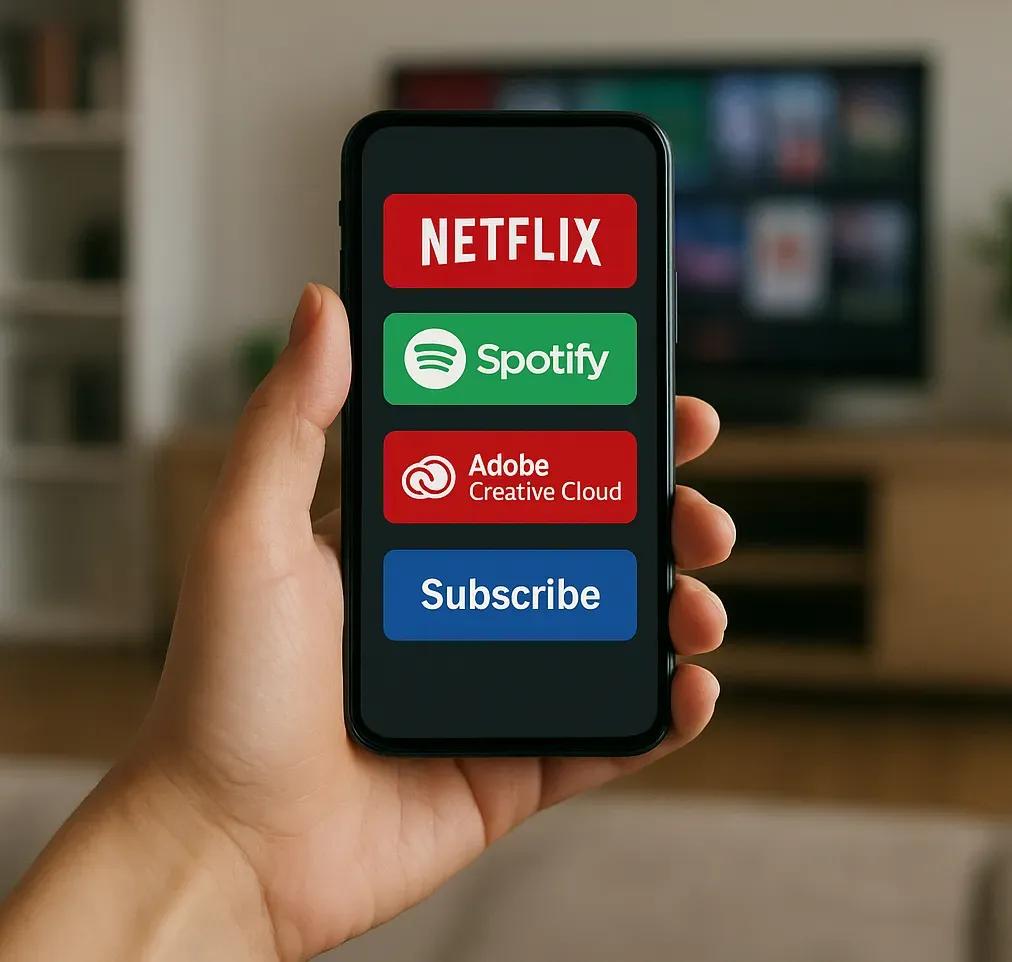In the last decade, the way we consume products and services has changed radically. Increasingly, rather than buying goods outright, we opt to pay a monthly fee to access them. This phenomenon, known as subscription economy, encompasses everything from entertainment platforms to professional software, as well as food, transportation, and wellness services.
What makes this model so interesting is that it combines convenience and continuous access, but it also has a direct impact on our personal finances. Many people do not realize that their monthly payments add up and, by the end of the year, represent a significant expense that could have been allocated to savings or investment.
What is the subscription economy?
The subscription economy is based on a simple principle: instead of purchasing a product or service outright, we pay recurrently to enjoy its benefits for a specified period.
Clear examples include:
Entertainment streaming: Netflix, Spotify, Disney+, Amazon Prime Video.
Software and digital tools: Adobe Creative Cloud, Microsoft 365, Canva Pro.
Fitness and wellness: training, meditation, or yoga apps such as Calm or Freeletics.
Food and consumer products: meal delivery, snack or healthy food boxes, coffee shop subscriptions.
Mobility and transportation: car-sharing services, electric scooters, and urban bicycles.
This model has been adopted by companies worldwide due to its ability to generate recurring revenue, improve customer loyalty, and provide constant updates without additional costs.
Advantages and disadvantages for consumers
The subscription model has clear benefits but also some disadvantages worth knowing:
Advantages:
Immediate and flexible access: Allows for trying premium services without needing large upfront investments.
Continuous updates and support: Especially useful in software or applications, where you always have the latest version.
Customization: Many platforms adjust services based on user habits.
Disadvantages:
Cumulative recurring expenses: A person with several subscriptions can spend hundreds or even thousands of dollars a year without noticing.
"Phantom subscriptions": Many users pay for services they do not use.
Dependence on digital services: If the subscription is interrupted, immediate access to content or tools is lost.
According to recent studies, the average user of streaming services and apps pays between $30 and $80 USD monthly just in subscriptions, which translates to $360 to $960 USD a year. This does not include professional software, productivity apps, or wellness services.
Impact on personal finances
The main challenge of the subscription economy is financial planning. While it is convenient to pay small installments, expenses accumulate quickly. Many users do not track their payments, and at the end of the year, they are surprised to see how much they have invested in services that may not be essential.
To manage it better, it is recommended to:
Record all subscriptions in a spreadsheet or personal finance app.
Periodically evaluate what services are being used and which can be canceled.
Prioritize essential services over luxury or entertainment ones.
In this way, one can enjoy the convenience of subscriptions without compromising savings or investments.
Trends and future
The subscription model continues to evolve. Companies from different sectors are creating innovative packages:
"All-inclusive": bundles that combine streaming, software, and physical services.
Mobility and transportation: monthly subscriptions for cars, bicycles, or scooters.
Fashion and food: clothing and food delivered at regular intervals.
As consumers seek convenience and flexibility, the subscription economy will expand, transforming not only consumption but also the way we plan our finances.


Comments